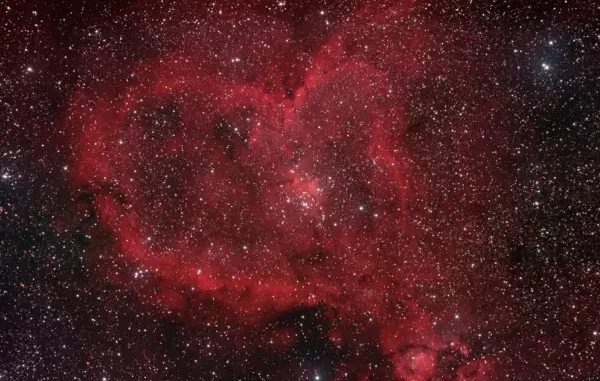
There are so many unique experiences that come with the grandeur of SUNY New Paltz, and the John R. Kirk Planetarium is no exception. Kirk was the first director of the planetarium and the place became his special interest. It wasn’t until after his death in 1979 that the college faculty petitioned the College Council to name the planetarium after him.
Located in the main lobby of the Coykendall Science Building, the 43 seat theater features a fish-eye lens projector which displays digital simulations of the sky and mimics celestial motions. The equipment received its latest update in 2013, and allows audiences to view the stars, planets, galaxies and other deep sky objects with careful precision.
Since its doors first opened in the 1970s, over 39,000 people have visited the planetarium. “We average about 4,000 visitors each year,” Raj Pandya, planetarium director since 2011 stated. “After a few rough years during the pandemic, the Planetarium audience is back and we are offering more shows than ever to meet the public’s interest!”
Minutes before the doors open, an eager crowd stands in the lobby, waiting in anticipation for the intergalactic showcase. Upon entering the planetarium, you’re immediately met with a feeling of solace in this cushioned space. The seats are designed for comfortability, with a headrest for support as you gaze up at the mesmerizing projections above.
“Our audience includes SUNY New Paltz students, faculty, staff and the general public, K-12 schools and other groups regularly book the Planetarium for private shows,” Pandya remarked. “Astronomy majors here also get a chance to learn how to use the planetarium and present their own shows. In fact, most of the planetarium shows are created and presented by students majoring or minoring in astronomy.”
In the time since its opening, the aspect of community has completely reshaped the planetarium. A vast amount of different shows are available to the public, including the well-known “Astronomy Nights,” held on the first and third Thursday of each month with activities appropriate for ages 7 and up. Specific shows are held for younger children to enjoy, as well as adult-geared events like “Meditation Under the Stars.” It’s a rare occasion to be able to meditate in an ethereal space like this, and it’s an experience like no other.
Students with an interest in astronomy are able to enroll in the course Planetarium Operation (PHY 342) if they want to become more involved with the logistics of the planetarium. Presenters spend around five hours per week inside the space, practicing and doing research for their showcases. Occasionally shows are accompanied by live music, in collaboration with music professors and students.
“I got involved with the planetarium last semester when I took the Planetarium Operation class,” fourth-year geology and secondary education major Casey Hampton shared. “To work in the planetarium, you have to take the course and learn how to work the different systems and be able to present a show, and you learn a lot about the night sky.”
A typical show has the duration of around 60 minutes and has a main focus in mind. On Thursday, Feb. 16, the theme was geared towards “Dark Universe,” as the working title was presented. Images projected were in accordance to this theme, as we toured the universe and were informed about how dark matter is identified. As Valentine’s Day was just a few days prior, the audience was specially shown the Heart Nebula, as a subtle ode to the holiday.
Weaving through the night sky, with contrasts from sunset to midnight, the high quality equipment allowed for the presenter to be accompanied by guiding lines for constellations, as well as zoom in on specific objects being referenced. The audience was dazzled by folklore about the naming of the constellations and refreshed on how to identify common groupings of stars in the night sky.
Observatory shows are available following most planetarium shows. On the outskirts of campus, nestled in the Alumni Soccer Fields, the Smolen Observatory has an ideal location for an unobstructed view of the night sky. Tickets are not required to attend, and a typical night includes viewing a planet or two, star clusters and nebulae. This experience is offered quite frequently, however it’s invariably weather permitting.
Students involved with the Planetarium Operation class are encouraged to embrace their creativity and put their own flair on their presented materials. “My favorite thing about the planetarium is coming up with new ideas for shows,” Hampton reflected. “It’s really fun to be able to choose some aspect of astronomy that you love, create a whole presentation around it and present it to people.” Tickets and the schedule of shows at the John R. Kirk Planetarium can be found on their website, newpaltz.edu/planetarium. Tickets are released a week prior to the show and are very limited, so make sure to get one fast! For more information, check out @npkirkplanetarium on Instagram for updates about shows and events.

